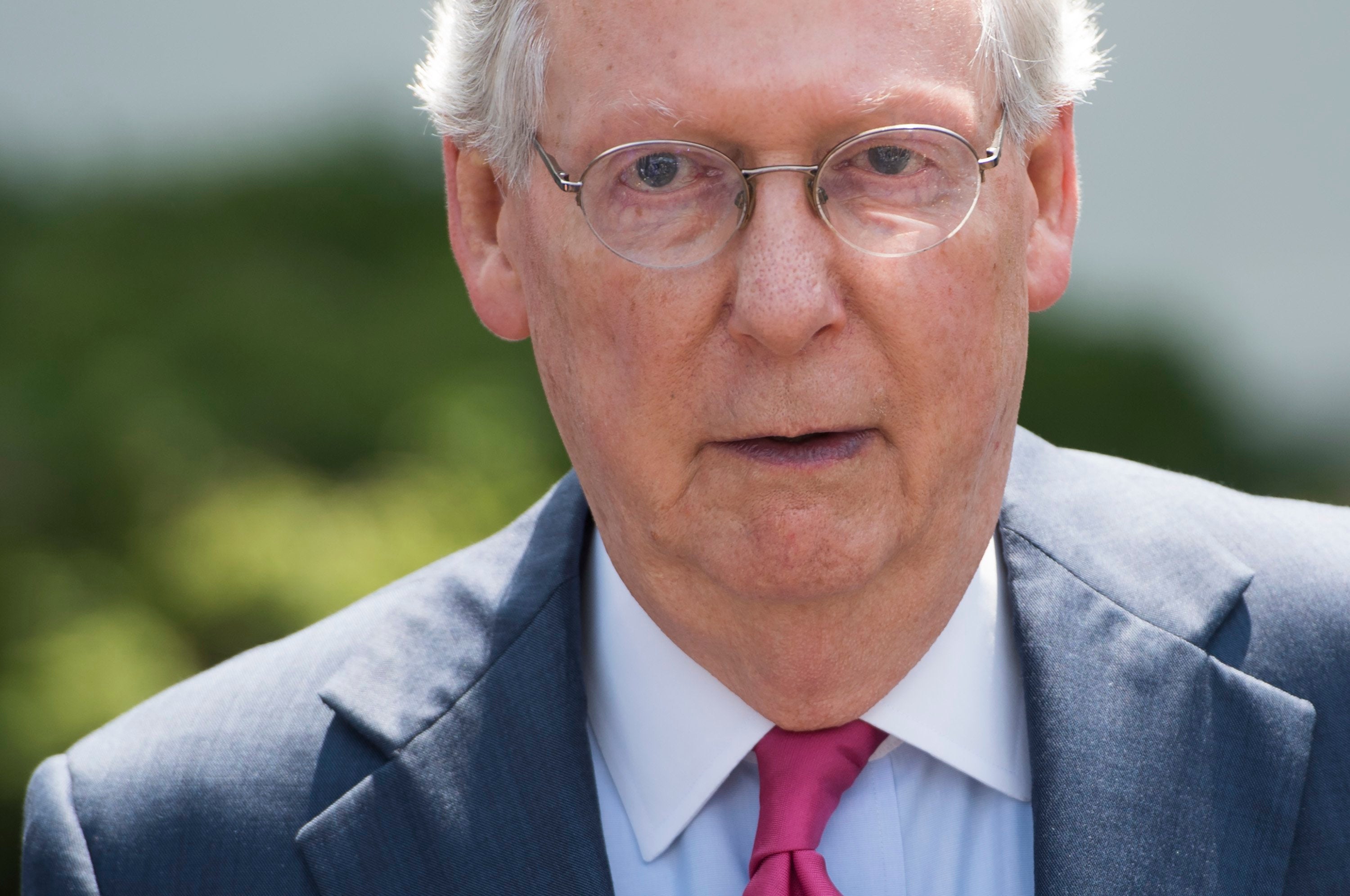
This article originally appeared on Time.
On Tuesday afternoon, Senate Republicans voted on a motion to proceed with debate on healthcare legislation, using a rare legislative gambit to move ahead despite reservations from some moderates. But unlike typical Senate procedure, many lawmakers are still unclear on what the actual bill will ultimately be.
With 52 Republicans in the Senate, Republicans could only afford two defections and that’s what they had. 50 Senators voted to support the measure. Only two Republican Senators, Lisa Murkowski and Susan Collins, voted no. All Democrats were unanimously opposed. With a 50-50 split, Vice President Mike Pence broke the tie.
The move appeared to have been designed to allow wavering moderate senators to vote to begin debate without seeming to support a version of the Obamacare replacement that they have criticized.
West Virginia Senator Shelley Moore Capito, for example, has repeatedly said she will not vote to repeal Obamacare without an adequate replacement, and has repeatedly expressed reservations about the impact the Senate’s version of the replacement bill would have on Medicaid recipients in her state. But Capito still voted to vote on a motion to proceed, noting in a statement that she would “continue to make decisions that are in the best interest of West Virginians.”
After debate begins, it’s unclear what exactly will happen next, although some observers have speculated that Republicans will likely hold votes on a number of different health care proposals that will fail before moving to a minimalist version of repeal that can go back to the House.
Here’s what you need to know about the process and what would happen next should the Senate proceed to debate.
Step 1: Begin Debate
As expected, the Senate voted to proceed with a debate on health care legislation Tuesday afternoon, as shouts of “kill the bill, don’t kill us” filled the chamber. When Senators voted on the motion to proceed, they were not voting for a final piece of legislation; they are merely voting to start debate. If three Republicans had voted against the motion, the process would have ended here. Only two did.
Step 2: Debate for 20 Hours
Should 50 Senators (helped by a tie-breaking vote Vice President Mike Pence) vote on the motion to proceed, the debate would begin. The motion to proceed was technically for debate on the House’s American Health Care Act, the version of the Obamacare replacement act they passed in May. Per Senate rules, the debate would last 20 hours, with equal time—10 hours—provided to both Republicans and Democrats. But there are restrictions within these 20 hours. According to Senate rules, any debate over an amendment can only last two hours, and a debate over an amendment to an amendment just one hour.
There are several possibilities floating around as to what could be amended to the bill. A full repeal is almost certain to be added in for a vote; Republican Sen. Rand Paul tweeted Tuesday that McConnell had told him the plan was to take up the 2015 repeal bill, incentivizing him to vote on the motion to proceed. Previously, Paul had been opposed to any version of a bill that did not fully repeal Obamacare.
Votes can be held during the debate process, according to a Senate aide. But when asked if amendments would be voted on during the debate, an aide to Senator McConnell told TIME that updates would be provided after the Senate voted on a motion to proceed.
Step 3: Hold Lots of Votes
After the debate is over, the process would begin to actually vote on the ones that were proposed, although amendments can be added in at this point as well. This is what is known as a “Vote-a-rama.”
Different amendments would need a different number of votes to pass. Amendments that clearly fall within budgetary discretion and have been scored by the non-partisan Congressional Budget Office, like a repeal-only amendment, would need 52 votes. But an amendment can be challenged, particularly if the Senate parliamentarian deems amendments or portions of the bill fall outside the budgetary process. For instance, the Senate parliamentarian, Elizabeth MacDonough, ruled last Friday that several portions of the Senate bill, including the proposal to defund Planned Parenthood for a year and penalizing people who don’t buy insurance by making them wait six months before buying any, violated the Senate rules because they fell outside of the budget process. Although this ruling was only advisory, if Democrats officially challenge the proposals — which they probably will — those proposals could ultimately require 60 votes to pass if they stay in their current form, rather than 52, and are thus unlikely to succeed.
Step 4: Send a Finished Bill Back to the House
Once all the amendments have been decided and voted on, the Senate will vote on the bill’s final passage. Should 50 Senators still be on board, the Senate would pass the legislation and work out the differences with the House, likely in the form of a conference, before sending it to President Trump to sign into law. According to the Congressional Research Service, the chambers would create a conference committee, comprised of members from both the House and the Senate, to work out the differences, which would culminate in the signing of a report. Once that report is signed, it would need to be approved by both chambers before heading to Trump’s desk.
